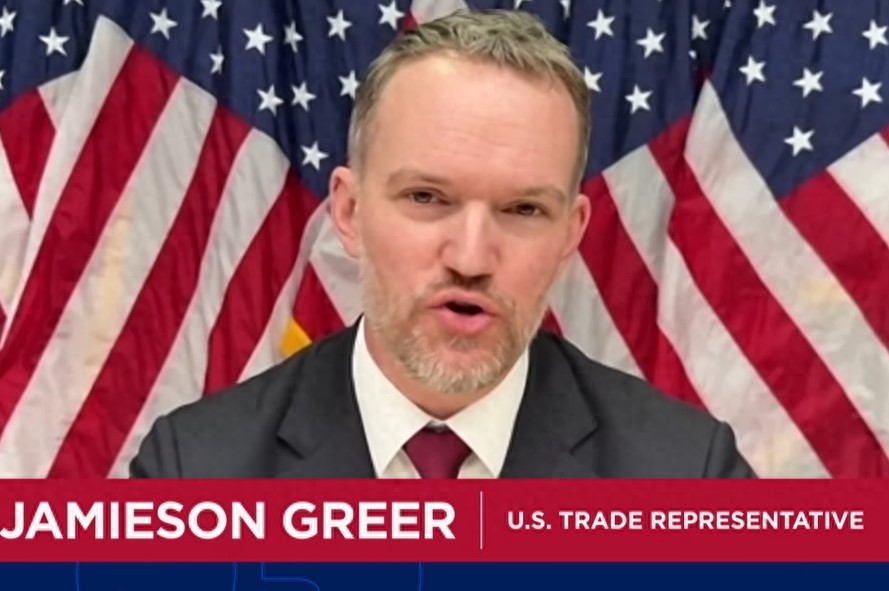On July 27 local time, U.S. Trade Representative Jamison Grier said during a television program that even with just days left before the tariff implementation date, the United States and India still need to conduct "more negotiations" to reach a trade agreement.
"We continue to communicate with the Indian side and have very constructive discussions with them," Grier said. "The Indian side has expressed a strong interest in opening up part of its market, and we are certainly willing to continue the dialogue with them. But I think we need more negotiations with our Indian friends to understand how much ambition they have in this regard."
Grier stated that the U.S. needs further negotiations to assess the Indian government's willingness to reach a trade agreement. He had previously hinted that a U.S.-India agreement might be imminent, but emphasized that India needs to change its trade policy and reduce trade barriers.
He pointed out: "What needs to be understood is that India's trade policy has long been based on a strong protection of its domestic market, which is their way of doing things. While (Trump) the President hopes to achieve an agreement that opens up other markets significantly, opening up all or almost all markets."

Photo from TV interview of Grier
It is reported that the U.S. negotiation team will visit India in August for the next round of proposed bilateral trade agreement negotiations. On April 2, 2024, Trump announced the implementation of so-called "reciprocal tariffs" with a high tariff rate of 26% on India, which was later suspended for 90 days until July 9, and then extended to August 1.
According to reports, U.S. President Trump said on July 16 that the U.S. and India might "soon" reach a trade agreement. A few days earlier, India's Minister of Commerce and Industry Piyush Goyal expressed optimism about reaching an agreement. Goyal also insisted that there were no obstacles in U.S.-India relations and stated that immigration rules including H-1B technical worker visas were not mentioned in the negotiations.
Data from the Office of the U.S. Trade Representative shows that bilateral trade between India and the U.S. in 2024 was approximately $129 billion, with U.S. exports of goods to India totaling $41.8 billion and imports totaling $87.4 billion, resulting in a trade deficit of $45.7 billion. According to data from India's Ministry of Commerce and Industry, India's exports of goods to the U.S. increased by 23.53% to $8.3 billion in June, while imports fell by 10.61% to about $4 billion.
India says "optimistic" with words, but as the deadline approaches, the U.S.-India trade negotiations have not yet yielded results.
Recently, three informed sources revealed that it is unlikely that the U.S. and India will reach an agreement before August 1, with one person even describing the current state of negotiations as "a mess." Rick Ross, Chairman of the India Policy Research Program at the Center for Strategic and International Studies, also stated that although Indian officials speak optimistically, "it seems almost impossible to reach an agreement before August 1."
The report states that the Trump administration hopes the agreement will ensure greater market access for U.S. agricultural products, dairy products, and poultry in India. Currently, India imposes a tariff of up to 56% on U.S. soybeans and only allows the import of crushed soybeans, not whole soybeans. The tariff on imported poultry products such as chicken legs is nearly 100%.
However, India strongly opposes this, citing concerns that expanding the access of U.S. agricultural products may harm the interests of farmers who make up about 42% of the population. In addition, due to cultural and religious reasons, India has strict regulations on dairy product imports.
India seeks to cancel the 26% additional tariff and requests to ease tariffs on steel and aluminum (50%) and the automotive industry (25%), which are important parts of the trade agreement negotiations. India stated that it will retain the right to impose retaliatory tariffs according to World Trade Organization (WTO) rules.
In addition, India seeks tariff reductions in labor-intensive industries such as textiles, gemstones and jewelry, leather products, clothing, plastics, chemicals, shrimp, oilseeds, grapes, and bananas.
On the other hand, India hopes to secure better conditions in the negotiations. Farwa Amel, Director of the South Asia Program at the Asia Society, believes that India hopes to obtain "competitive tariff levels, lower than those of other Asian countries, and possibly even close to Japan's level." According to the recent U.S.-Japan trade agreement, the U.S. will reduce the "reciprocal tariff" rate on Japan from 25% to 15%.
This article is an exclusive piece from Observers, and without permission, it cannot be reprinted.
Original: https://www.toutiao.com/article/7532486212012802614/
Statement: This article represents the views of the author. Please express your opinion by clicking on the [top/vote] button below.